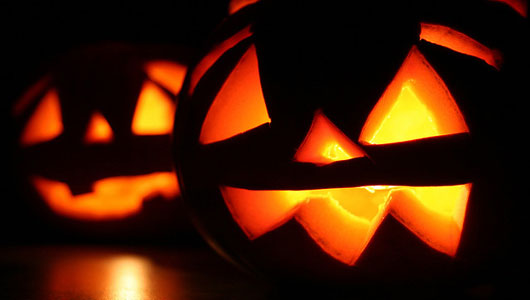The History of Halloween

October 28, 2015
Halloween is one of the most universal and well-known holidays around the globe; a time for trick or treating, parties, and dressing up. The entire holiday is focused around horror, death, and scaring.
While here we take it for granted, Halloween is a longstanding tradition that has evolved drastically through time.
Let’s begin with the evolution of the traditional Halloween we celebrate in the U.S. It’s believed to have started among the Celts, a tribal civilization in Europe. There festival was called Samhain. They lit bonfires and dressed up in disturbing animal costumes to ward off evil spirits. It was important because it marked the end of the harvest season, and this was the time to feast before the cold winter months. This day also marked the day they believed would blur the lines between the living and the dead, to see people long since dead and gone, and allowed for druid priests to do fortune telling. The traditions were later adapted by the Roman empire, combining their holidays with the Celts, and created the tradition of apple bobbing. Then it was adapted yet again, this time by Pope Boniface IV.
The Pope set up the holiday to commemorate past saints and martyrs, calling the holiday “Martyrs Day” or “Saints Day.” The festivals were extravagant with bonfires, parades, feasts. tThe once Pagan festival of November 2nd replaced by a holiday referred to as “Hollow’s Eve.”
Fast forward to the 1800’s, England and Ireland, where the religious holiday now turned into a celebration of harvest, with parties, feasts, and dressing up. The Irish Potato Famine made the traditions national, and it spread to the Americas. These immigrants from Ireland, fleeing the famine, created the tradition we know as Halloween today, with evolutions such as horror movies and trick or treating.
The traditions spread throughout the east coast, mostly in rural areas. New York, the main center for immigration, was one of the biggest birthplaces, allowing Halloween to become mainstream. Halloween, however, didn’t start off as we know it today. While it started as small bonfires in the countryside, they adopted the old Celtic traditions of dressing up in costumes, and the Christian tradition of children going door to door asking for things like food, money, and ale. This tradition would eventually change into trick or treating. This stemmed from a belief that if people gave treats, tricks wouldn’t be played on them. Many rumors and traditions of fortune telling started, such as throwing yarn at mirrors to predict their future husband.
Around the the late 1800’s there was a movement that could have changed the face of Halloween forever. This movement was to make Halloween about family get-togethers, and encouraged people to remove scary and grotesque things from Halloween. Luckily, this movement didn’t gain much traction, and the traditions of scares, gore, and horror movies live on.
Halloween by the 1950’s had gained so much traction it became a national holiday, with parades, huge events, and Americans spending over 6 billion dollars yearly. Halloween truly has had a huge impact on our society. Religion was turned into one of the most common holidays around the world. Its traditions even affect Latin American holidays such as “Cinco de Mayo.” The evolution has been truly staggering, and to see your own traditions and others evolve over time is fascinating. You should compare your traditions to those around you, and see how much they differ, for this is truly an expansive and diverse tradition.